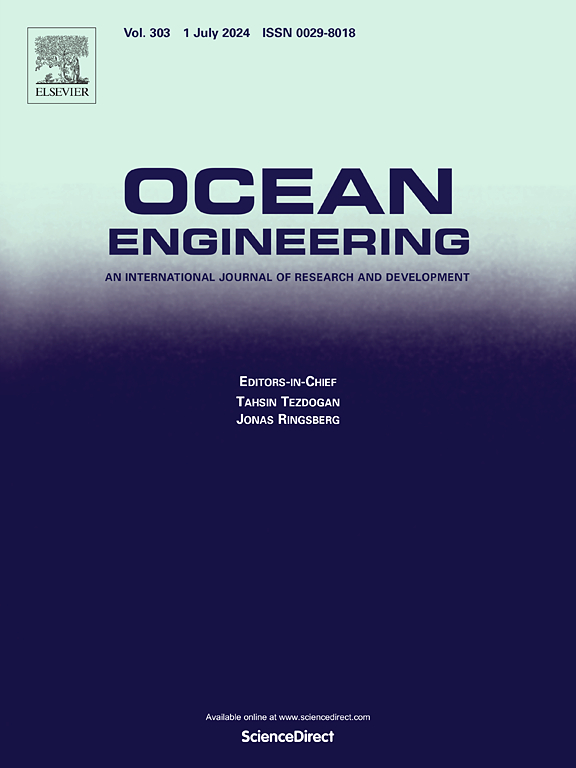Straightened velocity obstacle algorithm for inland ships collision avoidance
IF 5.5
2区 工程技术
Q1 ENGINEERING, CIVIL
引用次数: 0
Abstract
With the advancement of artificial intelligence, inland Maritime Autonomous Surface Ships (MASS) are gaining traction. While various algorithms exist for collision avoidance, many assumptions from open waters, such as constant speed and course, do not apply to inland waterways. Ships in these environments are constrained by riverbanks, making traditional methods like DCPA/TCPA-based risk evaluation and the Linear Velocity Obstacle (LVO)algorithm ineffective. To address this issue, we propose a Straightened Velocity Obstacle (SVO) algorithm for collision avoidance in inland waters. This algorithm is based on the observation that ships maintain a relatively constant distance from the riverbank or the channel's centerline. Unlike traditional methods that use geodetic coordinates, the SVO algorithm sets the channel's centerline as the y-axis and the distance to it as the x-axis, effectively straightening the meandering channel for better collision detection in Decision Space (DS). Simulations using traffic data from inland waters validate the proposed algorithm. Scenarios involving heading and overtaking in curved channels demonstrate that the SVO algorithm outperforms traditional LVO and CPA-based methods, demonstrating its effectiveness for MASS in constrained inland environments.
内河船舶避碰的直线速度障碍算法
随着人工智能的发展,内陆海上自主水面舰艇(MASS)越来越受到关注。虽然存在各种各样的避碰算法,但许多来自开放水域的假设,例如恒定的速度和航向,并不适用于内陆水道。这些环境中的船舶受到河岸的约束,使得传统的基于DCPA/ tcpa的风险评估方法和线性速度障碍(LVO)算法失效。为了解决这一问题,我们提出了一种用于内陆水域避碰的直线速度障碍(SVO)算法。该算法基于船舶与河岸或航道中心线保持相对恒定的距离的观察。与传统的使用大地坐标系的方法不同,SVO算法将通道中心线设置为y轴,将其距离设置为x轴,有效地将蜿蜒的通道拉直,以便更好地在决策空间(DS)中进行碰撞检测。利用内陆水域的交通数据进行仿真,验证了该算法的有效性。在弯曲通道中车头和超车的场景表明,SVO算法优于传统的LVO和基于cpa的方法,证明了其在受限内陆环境中MASS的有效性。
本文章由计算机程序翻译,如有差异,请以英文原文为准。
求助全文
约1分钟内获得全文
求助全文
来源期刊

Ocean Engineering
工程技术-工程:大洋
CiteScore
7.30
自引率
34.00%
发文量
2379
审稿时长
8.1 months
期刊介绍:
Ocean Engineering provides a medium for the publication of original research and development work in the field of ocean engineering. Ocean Engineering seeks papers in the following topics.
 求助内容:
求助内容: 应助结果提醒方式:
应助结果提醒方式:


